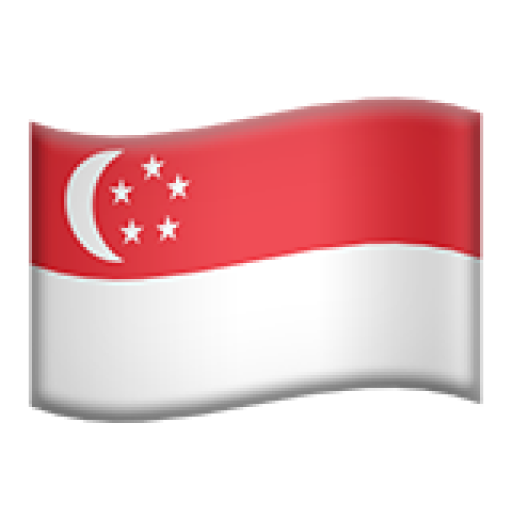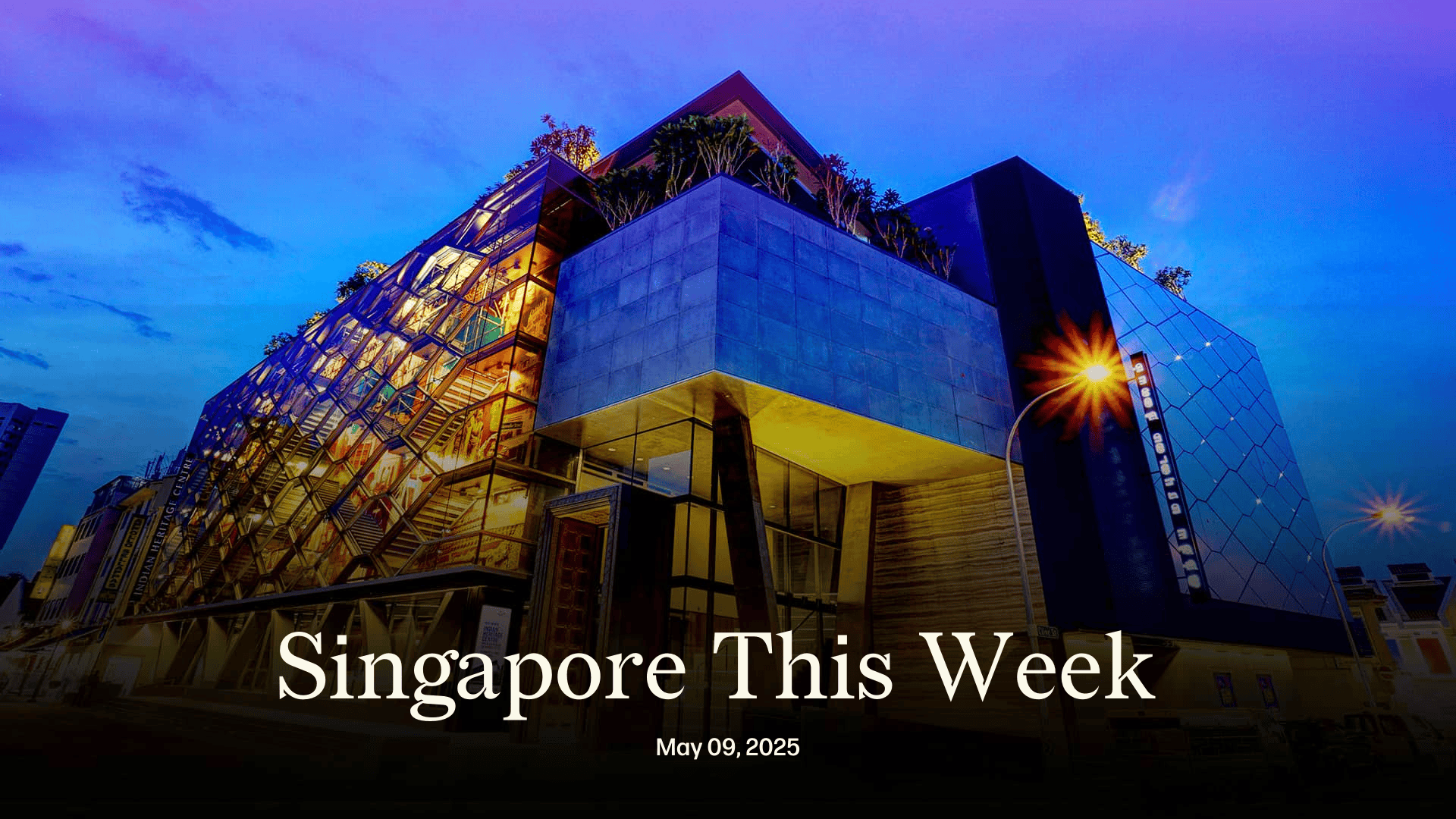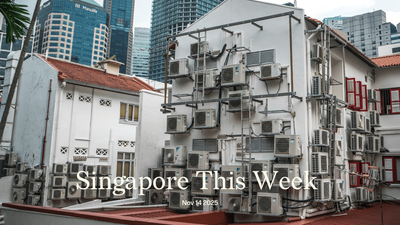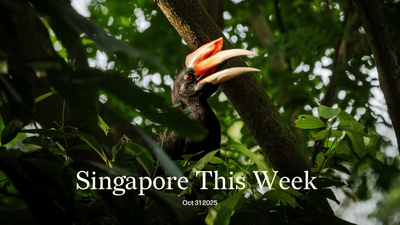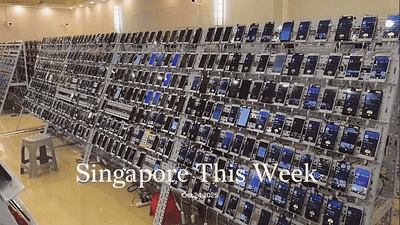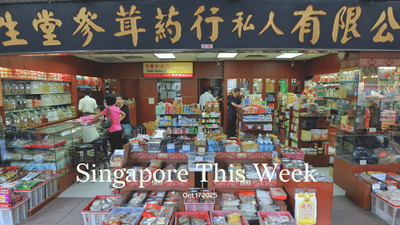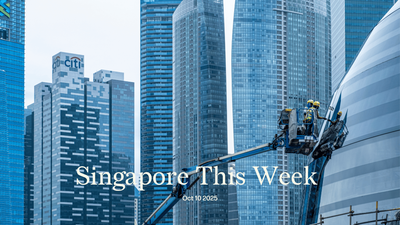Politics: Lawrence’s stunning success
The last time Lee Hsien Loong recorded such a high vote share, walkovers aside, was 1988. For K Shanmugam, 2001. For Vivian Balakrishnan, this year’s his peak. For the ruling People’s Action Party (PAP) as a whole, if one excludes the bizarre circumstances behind the SG50 2015 election, this was its biggest win since 2006. Perhaps the most astounding statistic is this: Lawrence Wong, the first party leader not to be unanimously picked by his peers, is also Lawrence Wong, the first prime minister to outperform his predecessor in the GE. The PAP lost vote share when Goh Chok Tong took over from Lee Kuan Yew, and again when Lee Hsien Loong took over from Goh. But Wong at GE2025 scored over four percentage points more than Lee at GE2020—itself another supposed “flight to safety” (pandemic) election.
Some local and international media have called it a “landslide”. Academic Cherian George disagreed, calling it a “status quo vote”, both for the PAP and the Workers’ Party (WP), at an AcademiaSG webinar on Sunday. Wong called it a “clear and strong mandate”. Sceptics will say the results are less about him than other factors, from global instability to opposition duds. Sure, almost every vote is multi-factorial, but it’d be naive, and perhaps petty, to not acknowledge Wong’s immense popularity.
Meanwhile, the emotional trajectory of opposition supporters from Saturday to Sunday evenings was fascinating. Cries of “bloodbath” morphed into some variant of “Oh, WP actually not bad ah.” Like at GE2020, the Workers’ Party (WP) outperformed the PAP in one important regard: overall, it won marginally more votes in the districts it contested. Its Sengkang GRC team improved on its past result. Its Aljunied GRC team, despite the relentless onslaught against Pritam Singh, saw only the tiniest dip in votes. And it’s clear that amidst a national swing towards the PAP, the WP increased the distance between itself and other opposition parties, none of whom will feature in the next Parliament. Inklings of a two-party system? But with just 10 elected MPs and two non-constituency MPs (NCMPs)—versus the PAP’s 87—the sky is still very much white.
“Lawrence’s stunning success” is also the name of our essay of the week. Read that for a deeper dive into the implications of GE2025 for the PAP, WP, all the other parties, and for Singaporean society at large.
Politics: Fujian kakis
In May 2022, shortly after Lawrence Wong had given his maiden May Day speech, his colleagues Chee Hong Tat and Ong Ye Kung were cavorting with a different kind of worker: Su Haijin, who’d later be arrested as part of the notorious “Fujian gang” in Singapore’s biggest-ever money laundering case. Also at the dinner, organised (and paid for) by “popiah king” Sam Goi, was Lim Swee Say, a former minister. Separately, we’ve also learned this week that Ng Chee Meng, the PAP’s new MP for Jalan Kayu SMC, was even chummier with Su, appearing in a close embrace with drinks in their hands.
For the PAP, it’s not just a public relations nightmare, but one that should prompt introspection. Ong and Chee have issued statements saying they don’t know Su and have had no contact with him before or since. (Ong said he also bumped into Su at a subsequent dinner.) They said that “in the course of their work, they may inadvertently come into contact with people who are later established to be unsavoury.” That’s fair enough. But Singaporeans should ask two questions. When ministers accept invitations to dinners with unfamiliar plutocrats, what’s the vetting process like? If ministers understand that these strangers might actually be “unsavoury”, why do they indulge them with cheery photographs of them and their spouses wining and dining? One can only imagine the mileage Su must have gotten in his nefarious dealings by being able to boast about his proximity to Singaporean power.
For Ng, there’s a separate problem. He claimed that as secretary-general of NTUC, it’s his job “to engage with different companies and private sector leaders” so that he can “better understand” their concerns. Sure. But it’s one thing to host Bill Gates. What exactly was the pretense for the meeting between Su and our labour chief? What industry was Su representing? Ng should clarify.
The numerous sources of Su’s wealth are unclear, though The Economist named him in its recent piece on online scams, which it said “may already be as big a scourge as illegal drugs”. Of course politicians would have had no idea about any of this when they met him. But the juxtaposition is terribly unfortunate: even as the PAP was trying its best to stop ordinary Singaporeans from losing billions to scammers, its ministers (and one kayu labour chief) were unwittingly helping a mastermind feel very much at home here.
Sign up for Jom’s weekly newsletter
Our newsletters combine weekly updates about Singapore with a “build-in-public” narrative, in which we tell readers about our start-up journey.
No spam. Unsubscribe anytime.
Politics: Indies rock
The two independent candidates who performed better than many opposition parties in GE2025 say they will continue speaking out on local and international issues that matter to Singaporeans. Jeremy Tan garnered 36.2 percent in Mountbatten SMC, the most by any independent in more than half a century. His sole campaign speech has been viewed nearly 300,000 times across The Straits Times (ST), CNA, and Business Times YouTube channels, and he now has more than 22,000 followers on Instagram. A day after the election results, Tan endeared himself further to fans when he posted “lol failed job interview yst” to LinkedIn, and declared that he was “open to work”. Tan, now reportedly in talks with some political parties, intends to raise municipal issues and the struggles of low-income households.
Fellow independent Darryl Lo ran a relatively low-key campaign, but still got 23.5 percent of the vote in the three-cornered Radin Mas SMC, comfortably ahead of the 7.4 percent eked out by Kumar Appavoo of the People’s Alliance for Reform. Lo’s also cultivated a modest following of nearly 6,500 on Instagram. “It shows that the residents are looking for someone who is more credible,” he told ST, even as he admitted to being unsure of his own political future. However, he will still push for his election agenda: harsher drunk-driving penalties, the loosening of HDB-buying restrictions for singles, and better cleanliness in Bukit Purmei.
The duo’s energetic campaigning and performance showed up the ruling PAP, as well as the smaller opposition “mosquito” parties. During the post-election AcademiaSG webinar, Donald Low, political observer, wondered why none of the ruling party’s 32 new candidates had left a mark on election season. Challenging fellow panellists to name even five, he exasperatedly asked: “You [the PAP] talk about renewal; you talk about fresh team. Where are they?!”
Meanwhile, 27 opposition candidates lost their S$13,500 deposits after winning less than the minimum 12.5 percent of the vote. It’s too soon to say that the independents’ popularity shows a broader shift from small parties unable to grapple with larger policy issues to credible individuals with modest but coherent proposals. Perhaps Tan and Lo are exceptional; maybe voters were drawn to the novelty of the situation; or maybe it was just crafty social media strategies. No matter. Such vocal youth involvement—Tan is 34; Lo, 28—is a great sign in a maturing democracy.
War: Good for absolutely nothing
On April 22nd, militants in India’s troubled Kashmir region shot dead 26 unarmed civilians. On May 6th, India launched missiles to destroy what it said were terrorist sites on Pakistan’s side of the border. India has accused Pakistan of fomenting militancy-backed separatism in Muslim-majority Kashmir since the two nations became independent in 1947. Pakistan avers the unrest is local, rooted in a disaffected population whose grievances and demands have been suppressed by the Indians for decades, often violently. The reality is overlapping.
The two have fought three full-blown wars, the last in 1971. Since Narendra Modi, prime minister, came to power at the helm of a muscular Hindutva nationalist government in 2014, Indian responses to Pakistani provocations have become increasingly belligerent. After a suicide bomber killed 40 paramilitary personnel in 2019, Modi ordered an airstrike inside Pakistani territory, a major escalation. This latest confrontation has ratcheted the tension further. Among Indian targets was a site in Pakistan’s Punjab province, the lynchpin of its economy, marking the first time since 1971 that hostilities have spilled over the Kashmiri cauldron. Pakistan responded with heavy cross-border artillery attacks that killed at least 12 civilians.
Even prior to this, both countries were flailing in their own mires. Pakistan’s economy is in tatters, with massive external debt, and foreign exchange reserves to cover only three months of imports. An all-out war will be catastrophic for it. In stark contrast, the Indian economy is in rude health. But the country’s lurch towards vicious majoritarianism is gathering pace: its monstrous national media feeds on communal strife, its social media platforms teem with misinformation targeting minorities, mostly Muslim, whose plight the state is either complicit in or indifferent to. The openly sectarian nature of the Kashmir killings—the terrorists asked hostages to recite the kalima (Islamic prayers recited by South Asian Muslims), shooting those who could not—will only sharpen these base instincts.
India and Pakistan are both nuclear powers; Pakistan has a first-use policy if the threat to it is deemed existential. A terrifying thought, even if unlikely to come to pass. India is deeply embedded in global and regional trade networks. It exports large quantities of rice to Malaysia and Indonesia; its bilateral trade with Singapore was US$35.61bn in 2023-24, and the city-state has put in US$167.5bn (S$218.2bn) as Foreign Direct Investment (FDI) into the world’s most populous nation. A big conflagration, on top of other current military and economic wars, would cause major ructions. Leaders here, as elsewhere, have called for calm. Is anyone listening?
Society: Charity gates wide open
The Gates Foundation is setting up its first South-east Asian office, in Singapore. Founded by tech-billionaire Bill Gates and then-wife Melinda French Gates in 2000, it’s reportedly the world’s third largest charitable foundation and, as of 2023, has given out some US$77.6bn (S$101bn) in grants to programmes focused on public health, education and poverty. Philanthropic foundations will become increasingly important as government and private sector funding becomes less reliable. The US, by far the world’s largest aid donor, froze foreign assistance worth around US$70bn (S$91.1bn) per year after Donald Trump, president, took office in January. This included funding for critical humanitarian programmes in health, education and disaster relief administered by the United States Agency for International Development (USAID). One veteran international aid worker told the BBC it felt “like an earthquake across the aid sector, with life-saving programmes in ruins”. Trump’s destructive decision shook the Gates Foundation too. Several of its programmes were obliterated: vaccine research for malaria, deliveries of therapeutic food packets to malnourished children; and programmes to deliver HIV prevention technologies in Africa that the foundation helped invent. “The potential consequences of a significant disruption of the foundation’s work are immense—with the United States withdrawing from the World Health Organization, for example, the foundation is now the body’s largest funder,” wrote the New York Times.
In such a stormy climate for global aid, the arrival of a foundation with a significant war chest for health and development programmes is reassuring, even though details are still sketchy. It’s also an endorsement of Singapore’s efforts to become a regional philanthropy hub. There’s been a 10-fold rise in family offices in the city-state since 2019, and they’re being encouraged to channel their regional and global philanthropic activity through here. But all that glitters is not gold; critics of Gates and his charitable billionaire ilk warn of “philanthrocapitalism”. Linsey McGoey, a sociology professor, one of Gates’s earliest detractors, and author of 2015’s No Such Thing As A Free Gift: The Gates Foundation and the Price of Philanthropy noted: “The idea that Gates was a defender of the rights and the entitlements of people who are most disenfranchised by circulations of global capital is simply a ludicrous proposition…In reality, he was really at the forefront of helping to perpetuate inequality through his approach to labor contracts and through his approach to patient protections.” Other criticisms of western philanthropy: the lack of transparency; power-imbalances; and grantees vulnerable to donor pressures. Inevitable holes, perhaps, in a safety net spun by billionaires.
History Weekly by Faris Joraimi
The Indian Heritage Centre (IHC) is commemorating its 10th anniversary this year. Some 60 new artefacts—including from Singapore’s South Asian communities and Singapore’s National Collection—will be displayed in two phases, with 30 already up. I wonder if the number has any clever connection with SG60. This weekend, an Open House will be held, featuring a storytelling performance that incorporates the exhibits and objects on display. A Deepavali Open House is planned for September 27th to October 19th. Check out the IHC if you’ve never been. Despite the name, this is no community centre heritage corner with general facts. The IHC is home to an impressive collection showcasing the religious, ethnic and linguistic diversity of Singaporeans with connections to South Asia, be it ancestral, familial, migratory, past, and present. Like its sibling institutions, the Malay Heritage Centre and Singapore Chinese Cultural Centre, the IHC doesn’t just take these identity categories at face-value. Over the years, they’ve gently loosened the seams and knots that long bundled up disparate parts in the name of administrative and political convenience. Meaningful and important as it may be to have different heritage centres, my favourite part about them is occasionally encountering items that could also be at home in one or the other heritage centres. One item recently donated to the IHC is a traditional mehendi applicator, once a widely-used tool among Singapore’s Indian and Malay communities to draw henna, temporary body art for weddings and festivals. You’ll also find sarongs and betel-boxes across our different heritage centres and museums. This is the material evidence for a shared style of life that can’t stay inside one “heritage”. These objects travel through walls, as we have and do.
Arts: The art of the political play
Every five years, all of us get front-row seats to one of Singapore’s most theatrical spectacles: the GE. Like the best kind of wayang, there’s something for everyone, from the hustings to the polls, from the political drama to the performative politicking, from the stage-managed rallies to that clumsily choreographed tear-wipe. Singaporean theatremakers are particularly prolific when it comes to the political play, having long sharpened their pens on the powers that be. What’s less well-known: in the 1960s, the PAP had its own Cultural Bureau that commissioned plays in line with its own political ideologies. The ruling party’s burst of theatrical activity fizzled out by 1972, but till then, it had a stable of propaganda playwrights, including its go-to director-writer, Wang Li. He wrote “The Return” (1967), a Chinese-language play where a young leftist worker is incarcerated, then freed, and whose creepily enthusiastic siblings attempt to make him a “contributing member” of a “vibrant society”. One of them chides him: “Be a practical and useful man! You don’t need to be a hero!”
Ahead of the polls, local theatre company Teater Ekamatra revived “Geng Rebut Cabinet” (“cabinet seizing gang”; usually abbreviated as “GRC”), Alfian Sa’at’s scathing send-up of the group representation constituency system and how it does a disservice to minority representation by tokenising it, then coopting it. He coined the “Chai Chee-Commonwealth GRC”, whose reach from east to west takes much less of a stretch of the imagination given the recent, real-life formulation of “Marine Parade-Braddell GRC”. In the race-flipped Singapore of “GRC”, Alfian created a Malay majority and Chinese minority where an idealistic Chinese-language teacher is trying to make something of the activism she’s inherited from her late husband. But she’s steamrolled by the state into becoming a token candidate and trophy translator, rather than the changemaker she longs to be. Then there’s “Brown Boys Don’t Tell Jokes” (2023), young playwright Myle Yan Tay’s stunning debut, where we see in real-time how five best friends might come together, then fall apart, under the duress of the politics of race. On one level, the play’s about brown masculinity in Singapore, and how brown men are expected to create certain kinds of cultural cool, or honour unspoken codes of solidarity and brotherhood, while also demonstrating respectability and acceptability. Set on the eve of an election, the play’s also a persuasive portrayal of digital outrage and cancel culture in the lead-up to the launch of one of their careers as an opposition politician. This “star catch” has the pedigree and the persona. But he’s also carrying a ticking time bomb of a secret. This grenade of a political scandal—that eventually blows up the group—gains potency and plausibility through Tay’s carefully plotted character studies. The show’s hysterically funny, but as the title suggests, it’s a humour that’s quickly poisoned when it’s performed for or possessed by the majority gaze. We may try to heed PM Wong’s call to keep race out of the political space, but our playwrights know: that’s hardly ever the case.
Arts: Extension and expiry
There’s probably only one place in Singapore where you might reassemble the delicate bones of a bird, fashion a vessel on a potter’s wheel, get a tattoo, have a facilitated conversation with a stranger, and go for a pub quiz after. 195 Pearl’s Hill Terrace (195 PHT), the lush art enclave atop the hill of the same name, is getting a temporary lease on life. The Singapore Land Authority has extended its lease till March 2028, quelling fears of the over 150 tenants that they’d have to soon vacate the former police barracks. Soaring rents, short leases and ceaseless redevelopment have plagued independent arts and culture spaces here, especially those operating outside of the National Arts Council’s arts housing scheme. These grassroots ecosystems have one big draw: the messy joys of communal gardening over the manicured plots of state-run venues. Teo Huey Min and Thomas Cheong, the artists behind ceramic studio The Potters’ Guilt, told ST that the tradeoff was worth it: “Although we may not enjoy the subsidised rates that NAC’s arts housing scheme offers, we are also not bound by the stipulations their tenants are obliged to observe with the onus on individual tenants to manage their own sustainability and overheads.” Jerry Tan, master tenant at 195 PHT, provides flexible rental arrangements to his sub-tenants, starting at a shockingly affordable S$500 a month for an 80 sq ft unit. This allows emerging artists something of a safety net to experiment with their offerings and business models.
Other spaces, unfortunately, haven’t quite secured their future. The Projector announced that its Golden Mile Tower location would do away with daily screenings as of May 5th. The indie cinema is keeping up its daily programming at its Cineleisure location, but will now focus on events, rather than films, in the brutalist building, from comedy shows and wrestling matches to an upcoming rock-climbing film festival and “climbers’ market” for bouldering enthusiasts. Karen Tan, its co-founder, says the company is “choosing to be proactive” about the outcome of the en-bloc sale talks that unit owners are currently having with developers. The cinema’s lease at Golden Mile Tower concludes at the end of the year. Ground-up movements, top-down mandates: just another day in the life of independent artists in Singapore.
Tech: From Google Sheets to Glints
In 2013, three Ivy League students paused their studies to start Glints, a modest Google Sheets-based internship tracker. The leap of faith paid off for Oswald Yeo, Looi Qin En and Seah Ying Cong. Today, the talent platform operates in multiple markets, with more than US$50m (S$64m) in venture capital from funds such as Monk’s Hill Ventures and Wavemaker Partners. Now, CEO Yeo is making way for Dylan Huang, a Tencent and Meituan veteran who joined Glints in 2022. The handover follows a familiar playbook of founder-to-professional transitions seen at GoTo and PropertyGuru. Huang is credited with building a monetisation engine that drove 10x growth in Glints’ talent platform. His product-centric leadership may prove vital in refining its job-matching algorithms and employer tools. But the real test will be whether this changing of the guard can deliver profitability without losing the founder-led vision that fueled its early success. The company reported a US$12.3m (S$16m) operating loss in 2024—underscoring the challenge of balancing scale with sustainability in today’s cautious funding climate—but claims to be “on track” for operational profitability by end-2025. Meanwhile, Yeo’s shift to executive chairman mirrors his “clock building” philosophy of creating an enduring institution. His candid reflection on 2022 layoffs as a “battle scar” reveals the hard lessons of hypergrowth. As South-east Asia’s tech landscape matures, more founder exits like Yeo’s will likely follow, each a referendum on whether these companies can outlast their creators.
Tech: For Ah Ma
Two new digital solutions first showcased at the 2024 Build for Good Hackathon aim to tackle aging-related challenges. CareCompass, created by a team including 28-year-old product manager Joshua Gei, consolidates care services, subsidies, and reviews in one app. Gei got the idea when his family struggled to navigate the plethora of information and services after their 88-year-old grandfather had a stroke. HeartBeat tackles senior isolation through daily check-ins. It alerts caregivers via WhatsApp if users miss their routine or report consecutive “sad” days. Senior isolation is a pressing problem, with increased risk of accidents, and even unnoticed deaths. And it is likely to get worse in an aging society where one in four people will be over 65 by 2030.
These solutions highlight Singapore’s unique public-private approach to social challenges. The Open Government Products team gave CareCompass S$20,000 through its Accelerator programme, while the Singapore Government Partnerships Office facilitated access to public agencies and 30 caregivers for user testing. This bridges the common gap between well-intentioned tech solutions and actual community needs. The challenge now is scaling these pilots while maintaining their community-driven ethos. After all, a deep human touch and centricity is the very essence of caregiving.
If you enjoy Jom’s work, do get a paid subscription today to support independent journalism in Singapore.
Correction: An earlier version of “History Weekly by Faris Joraimi” misstated that all artefacts had been donated by Singapore’s South Asian community.

